Rineke Dijkstra
So with face mask firmly in place I made my way to the Marian Goodman Gallery in London's Mayfair area. I had a timed appointment to visit, so before going in I locked my bike to a lamppost and sat in a fairly deserted Golden Square enjoying a coffee and soaking up the summer sun. I wasn't entirely sure what I was going to see in the gallery beyond photography by a Dutch artist.

The galleries are filled with large format photographic portraits, and nobody is smiling for the camera. I refer to the notes and read that Rineke Dijkstra "is most known for her photographic portraits" and "in particular, she is known for foregrounding the intimacy of the photographic medium: how time is embodied to reveal transitory moments or passages of change; revelation and reflection of the self". I stare at the people in the photographs, they stare back with blank looks.
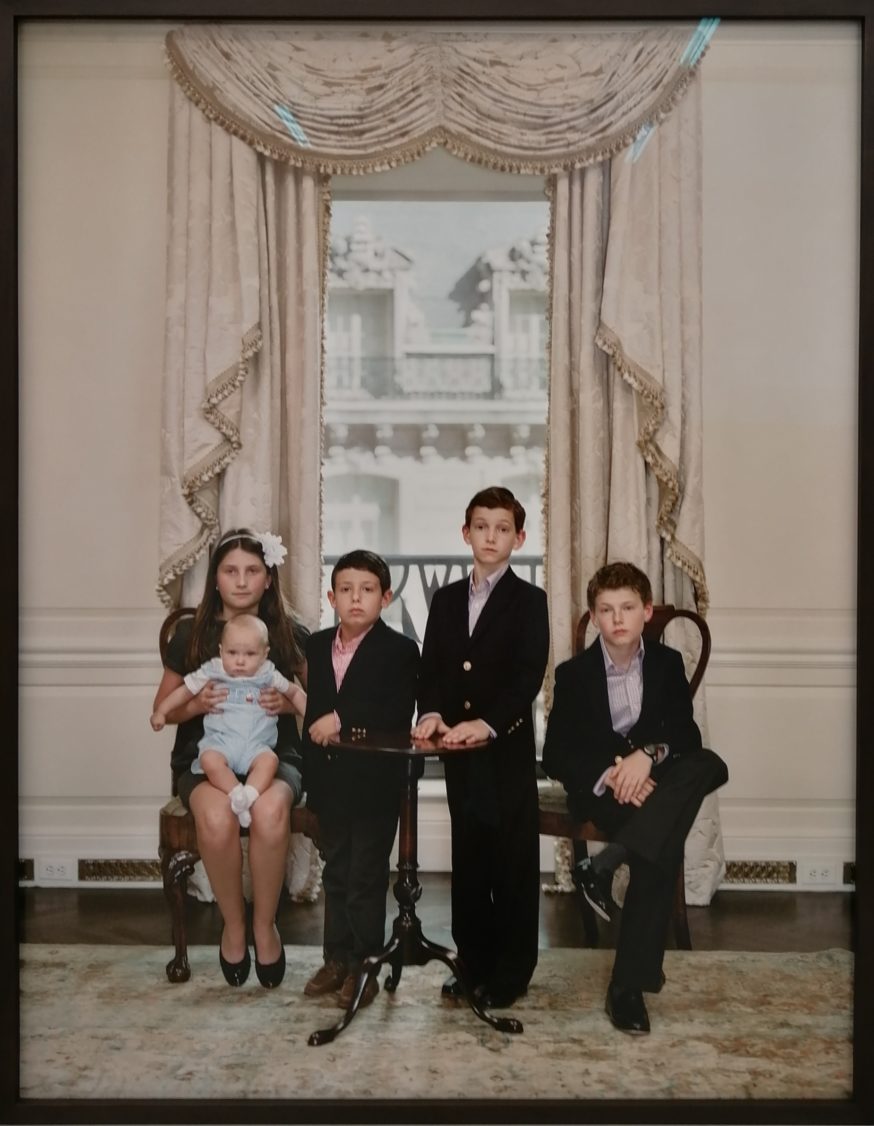
It's the blank stares which are most striking, especially when the subjects are children. This one (above) is from the ongoing Family Portraits series "which began as a series of private commissions in 2012". According to the handout "Dijkstra directs the children to pose with no particular facial expression, to be natural in front of the camera whilst aware that a portrait is being made". This I find really interesting, especially at a time when we are so desensitised to photographic portraits by posed selfie culture and the instantly forgettable format of social media. Here, in these photos, nobody is trying to show their best side. Nobody pouts, at least not in a deliberate way. I think this is why these portraits become a challenge to the observer rather than something to stroll/scroll past. I find myself studying other details in the photos for clues to who these people are and what sort of lives they lead. There's very little to go on and this adds to my fascination.

Upstairs the large, light and airy gallery space is lined with a series of photographic portraits each depicting the same three sisters between 2008 and 2014. As I walk around I see the gradual changes - not so much in their anatomical development but more in their engagement with the camera. It's a confrontational experience.

For me, the most memorable part of this exhibition is the UK premiere of Night Watching (2019), "a video installation commissioned and first shown at the Rijksmuseum in Amsterdam in 2019". This "three-screen video installation features 14 different groups of people observing and speaking in front of Rembrandt's large iconic painting The Night Watch (1642)". We watch them as they look back at the painting and discuss their individual responses to it.

The footage lasts for 35 minutes and I was unable to tear myself away. It's an artwork about how we engage with art - what thoughts it can provoke - connections with our own experiences and reflections on who are are and our place in the world. And that's what it's all about. Brilliant stuff.

Bridget Riley: Studies: 1984-1997
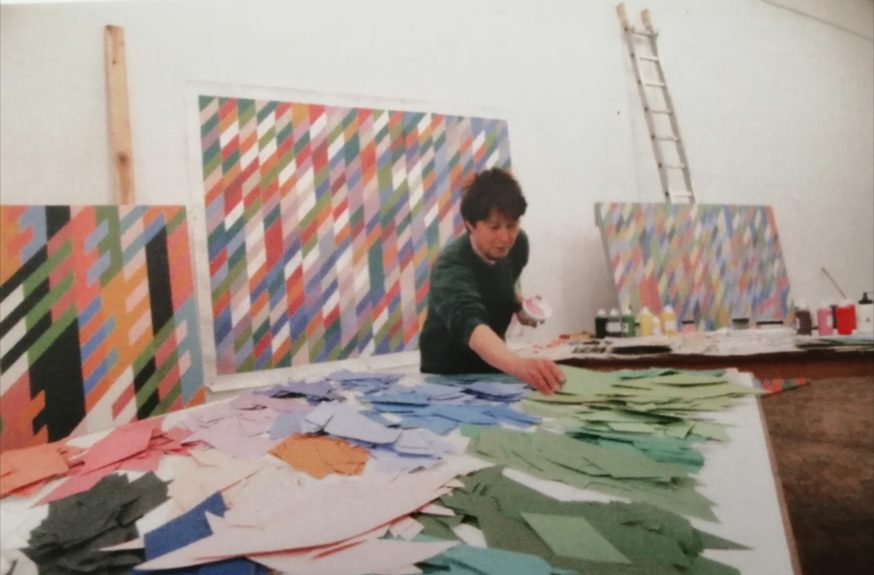
As galleries begin to open again this week I decided to check out two exhibitions currently on display at David Zwirner in Grafton Street. I booked ahead and cycled from home to Mayfair. Mask in place I made my way upstairs and was very glad I'd made the effort.

Bridget Riley has filled this airy space with her selection of 'a group of working studies from the 1980s and 1990s that show the movement from 'stripes' to 'rhomboids'.
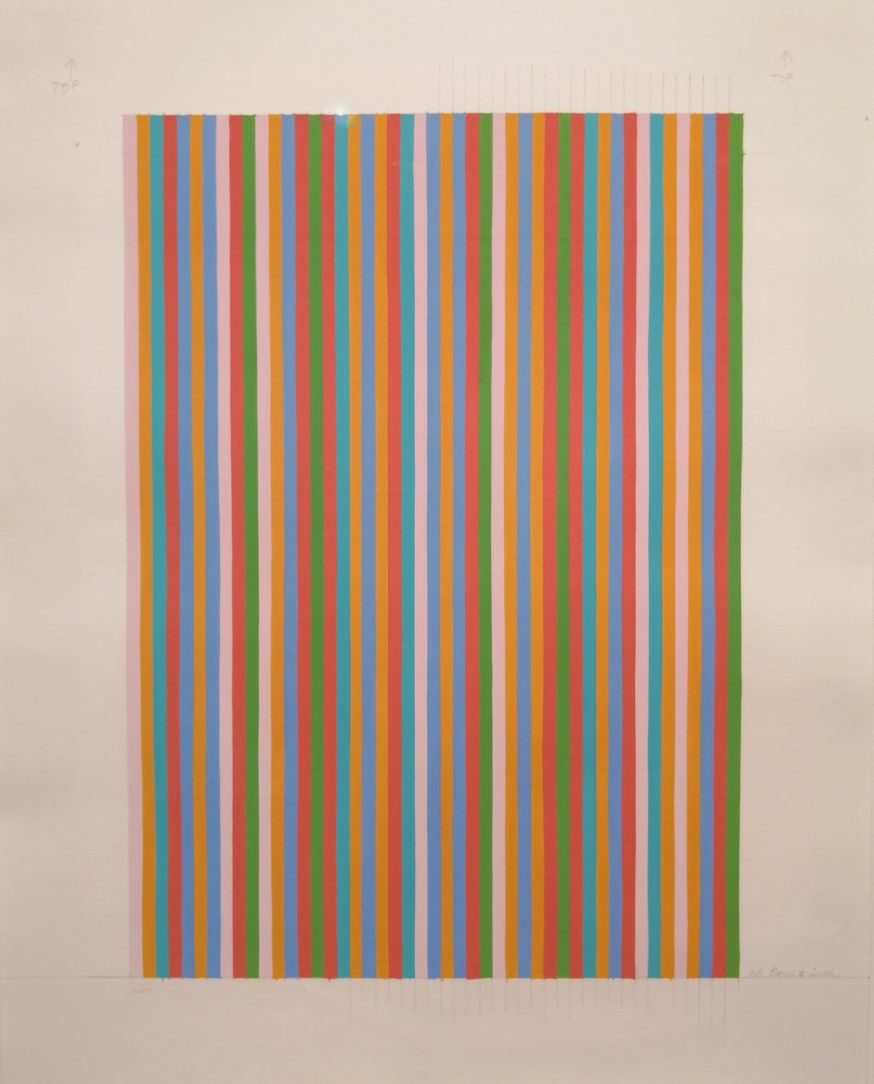
What instantly appealed to me was the way these studies show how the artist develops an idea by starting off with stripes and then crossing these with diagonals which, to quote the gallery, 'move the eye around, across and through the pictorial space' and it's this that leads to the 'rhomboid' paintings. Familiar with both in their finished condition, it is fascinating to see how these were intricate experiments planned out on annotated graph paper.

Riley's fascination with - and reinterpretation of - the French post-impressionist and pointillist artist Georges Seurat is well known and it is not an enormous leap to imagine these as details from his paintings enlarged and formalised. But for me it's the colours that aren't on the paper that dance in the mind's eye that I try to allow to take shape. The more I look the better the effect, like staring at one of those Magic Eye pictures back in the 1990s, but heaps more rewarding.
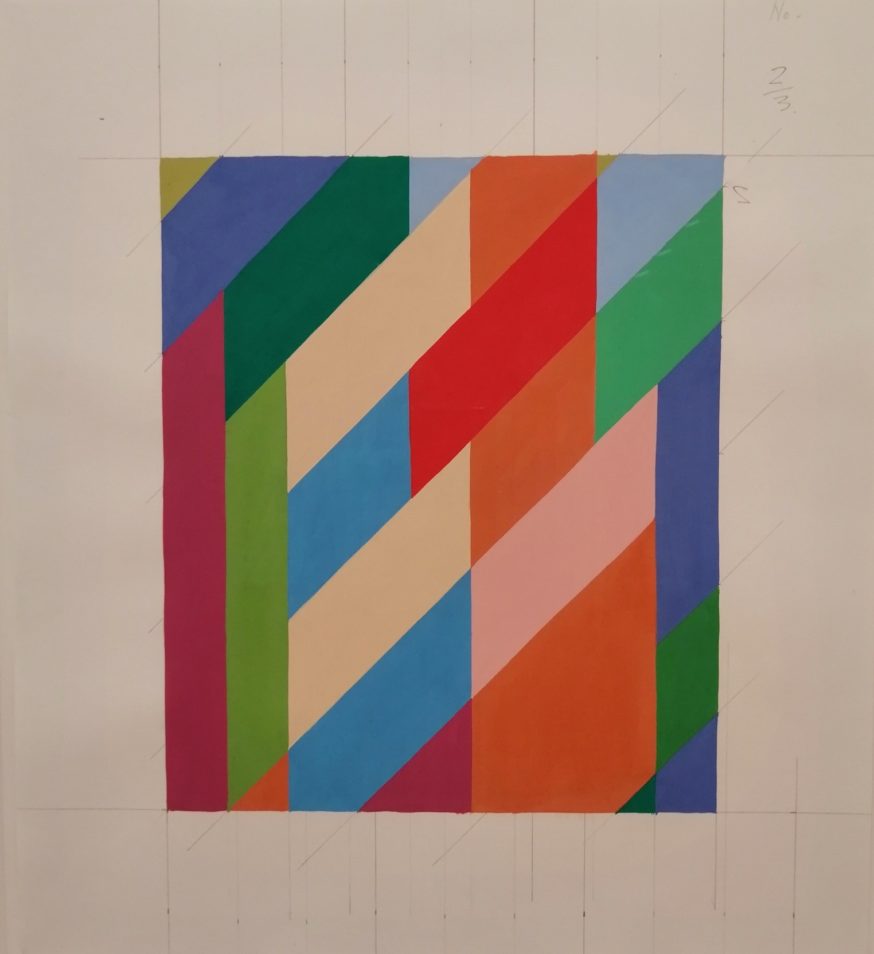
It looks deceptively easy. I have a hankering for some graph paper and coloured paints.

Crushed, Cast, Constructed
As commercial galleries gradually begin to reopen in London, I booked an appointment to visit the sculpture exhibition at Gagosian, Grosvenor Hill.
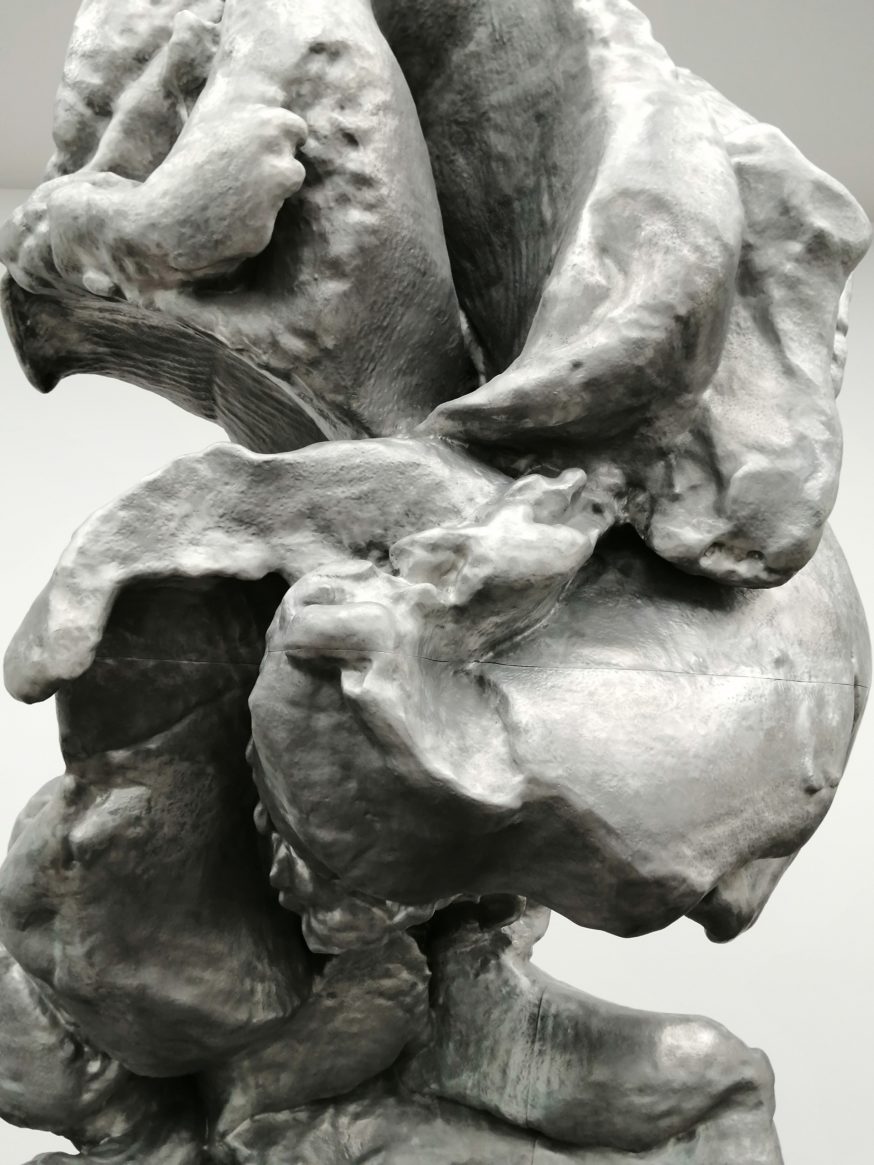
After donning a face mask and rubbing my hands together with a healthy blob of antibacterial hand-gloop, I was immediately attracted towards three giant sculptures. These aluminium pieces which dominate the gallery space are by the artist Urs Fischer. According to the gallery information, 'Each sculpture began life as a small mound of clay that was squeezed instinctively in the palm of the artist's hand. The resulting shapes were then scanned, refabricated as models over three meters high, and finally cast in aluminium, the prints of Fischer's fingers engrained on their giant surfaces.' It really is the fingerprints that are the thing here. These seemingly random shapes are strangely compelling when you appreciate the scale from the impressions of the artists fingers, and I found myself circling each of them several times.
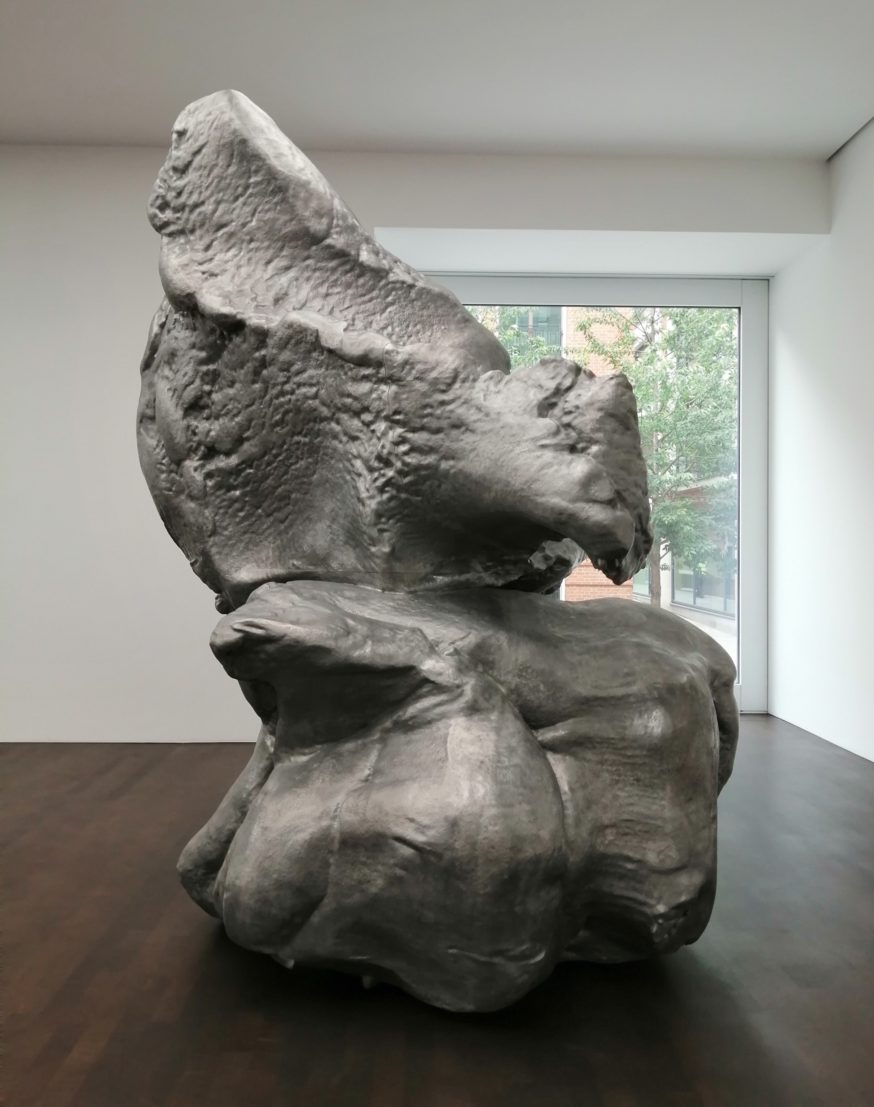

In the next gallery space is a single work by Charles Ray, but what a work it is. 'Tractor (2003-4) is a re-creation of a rusting 1938 farming vehicle, which had become a playground for local children when the artist discovered it in a backyard in San Fernando'. What Ray then did was to remove the disintegrating tractor to his studio and dismantle it piece by piece. He made a replica of each component part by creating first a mold and then a wax version of it and casting it in aluminium before finally assembling the whole thing as a facsimile of the original, turning a rusting wreck into a beautiful, shiny object - a work of art.
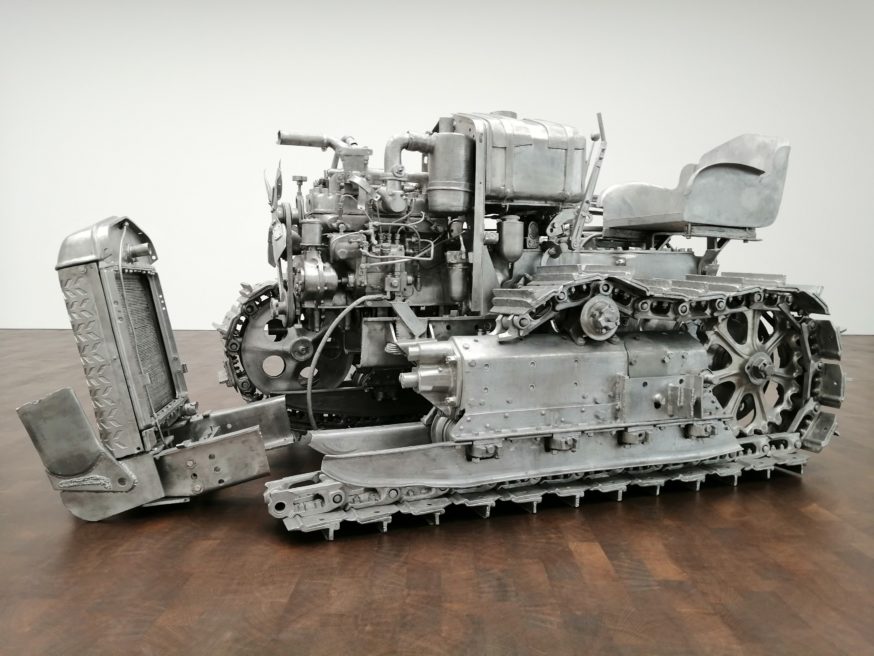
For me, knowledge of (and wonder at) the painstaking process enhances my response to this. Without any mechanical knowledge on my part I still found myself staring intently at the gubbins and guts of the motor - stuff I would not usually take any interest in but here taking on new meaning and significance in terms of the relationship between the mass-produced and the handmade.
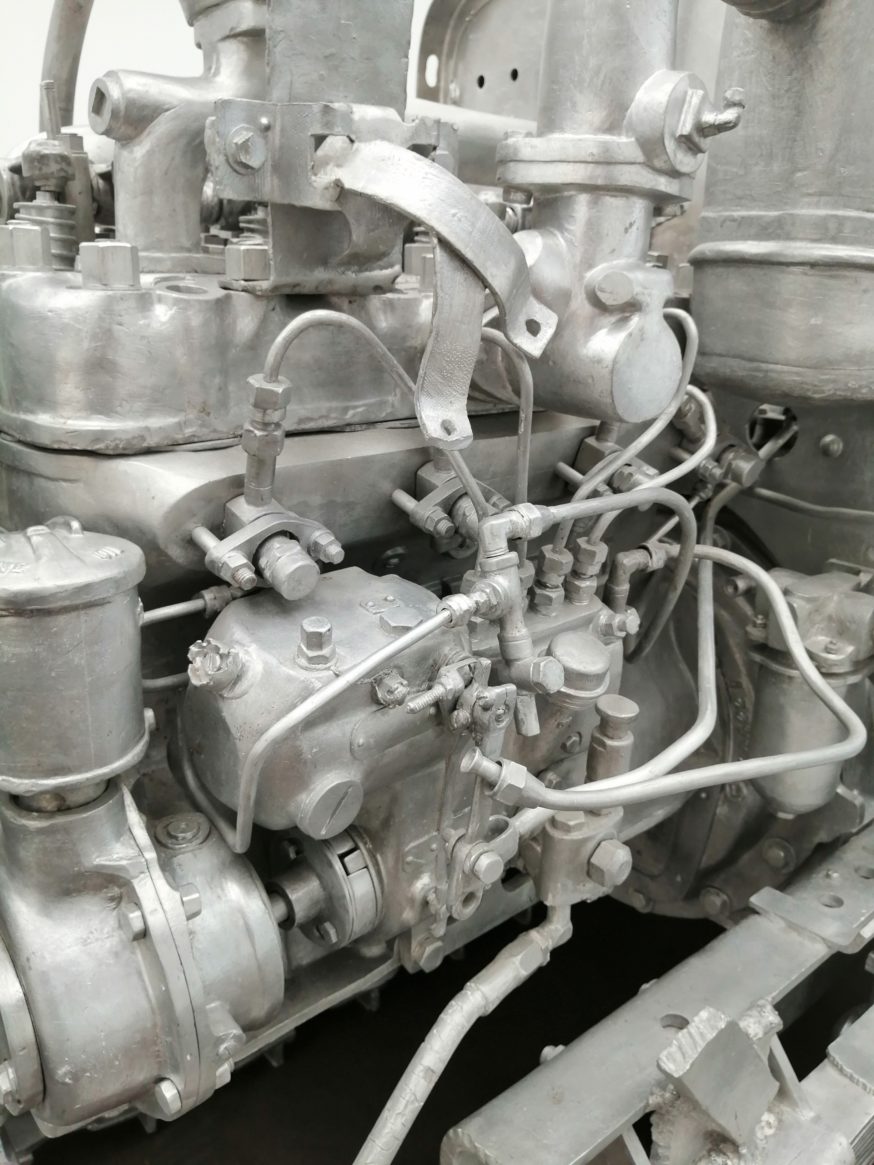
But I thought there were three artists represented here? I must have missed one - and I had. When I wandered straight to the Fischer monoliths I had not noticed the artwork on a plinth in the entrance gallery. This is by John Camberlain and his piece represents the 'crushed' part of the exhibition's title.
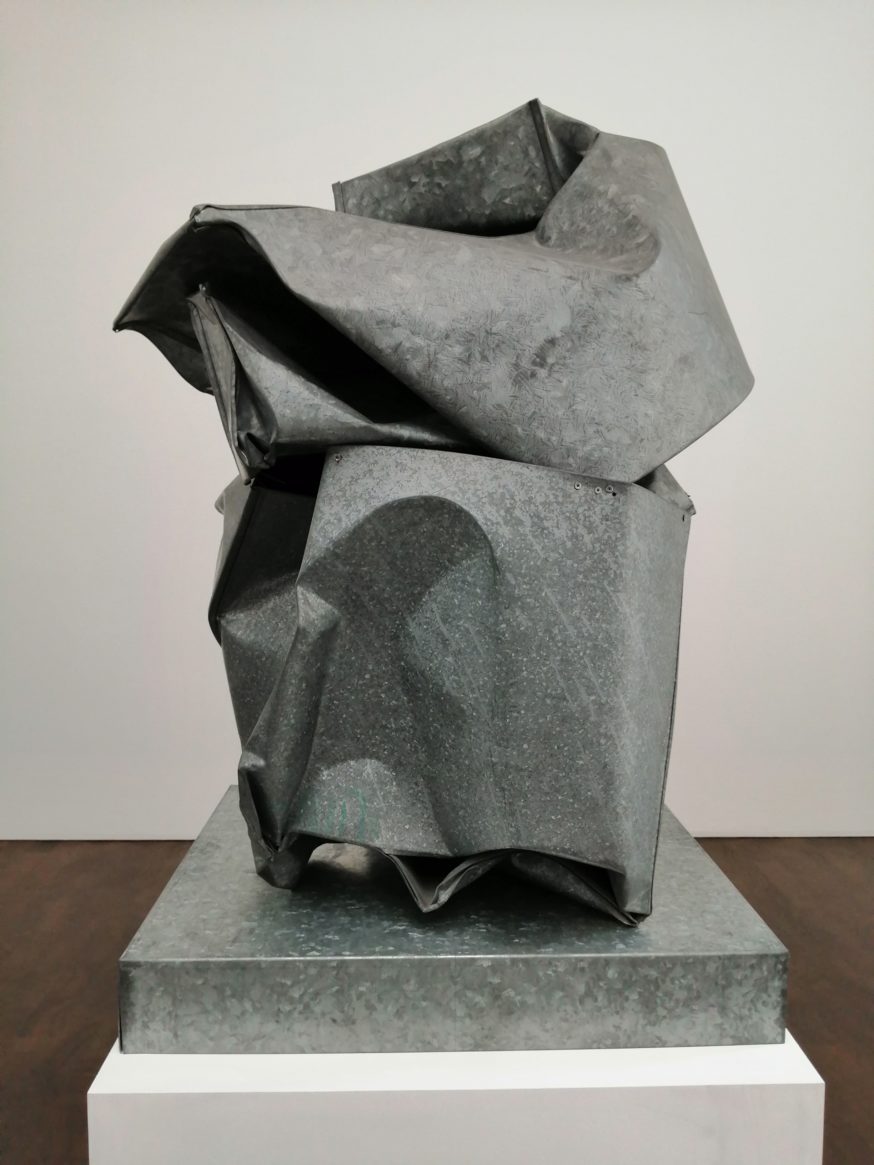
'Between1967 and1969, John Chamberlain produced a group of sculptures using galvanised steel [...] Starting with fabricated boxes - some made and discarded by Donald Judd - Chamberlain crushed each hollow pack, compressing the sculpture into a new form'. So this is, in effect, the crushed work of another artist. It has layers, both physically and metaphorically. The material is not insignificant - galvanised steel is a manufactured metal covered in a protective layer of zinc so for Chamberlain it was 'devoid of narrative or history'.
Lockdown has left many of us feeling a bit crushed. Perhaps we can take inspiration from these artworks and use the opportunity to recast or reconstruct ourselves.

No realm of thought...No field of vision

For the first time since early March (nearly four months ago) I've visited an art gallery. There were several differences to the usual experience. (1) I had to pre-book a timeslot. (2) I had to wear a face mask - which made my glasses steam up. (3) I had to follow a one-way system around the gallery. Apart from that it was business as usual and the restriction on visitor numbers meant the gallery was much quieter than usual - not a terrible thing.
This is an exhibition of new work by Cerith Wyn Evans, the Welsh conceptual artist, sculptor and film-maker. The show opened way back on 7 February but, like all London galleries, was shut down just a few weeks later. It was scheduled to close in April but it has been extended to August.

So what's it all about? The first gallery space has four black and white abstract works on paper on the walls and two rotating trees, their moving shadows projecting in overlapping discs of light on the wall (see photo above). The second gallery contains a vast installation - 'a celebration of aerodynamics in neon' - and the largest gallery space is filled with smaller neon sculptures, a suspended wall of neon lettering (see photo below) and glass flutes playing random sounds that seem to emanate from sheets of actual glass that hang from the ceiling. The final gallery is filled with panels and screens (in some cases literally windscreens suspended from the ceiling) all artfully shattered to greater or lesser degree (see photo below).

It is beautiful and immersive. I've been deprived of art for so long it's hard to know if that explains why I liked it so much. The suspended neon sculptures are filled with hard lines and soft curves, complex shapes and zigzags. There's plenty of references to Duchamp here I think - his Bicycle Wheel and The Large Glass play a role, and I later discovered that the neon curtain made of Japanese kanji is a translation of a Proust description of a fountain - which itself is a reference to Duchamp's famous urinal. The sound of the glass flutes creates an eerie yet compelling contrast to all this. The apparently randomness of shattered glass takes on an intriguing 'designerliness'. I'll never look at a broken window in the same way again. Maybe I should examine the chip in the car windscreen more closely.

But it's the abstract 'indeterminate paintings' that have remained with me. Like a Rorschach Test I can stare at them and find familiar shapes and contortions, even murmurations. For the art-starved this is balm for the soul,


Men Without Masks
There's an extraordinary exhibition at Hauser & Wirth London (until 28 July 2018) dedicated to the German photographer August Sander. Titled Men Without Masks, the display features an extensive selection of portraits made between 1910 and 1931 representing the socio-economic landscape in the years leading up to and through the Weimar Republic.
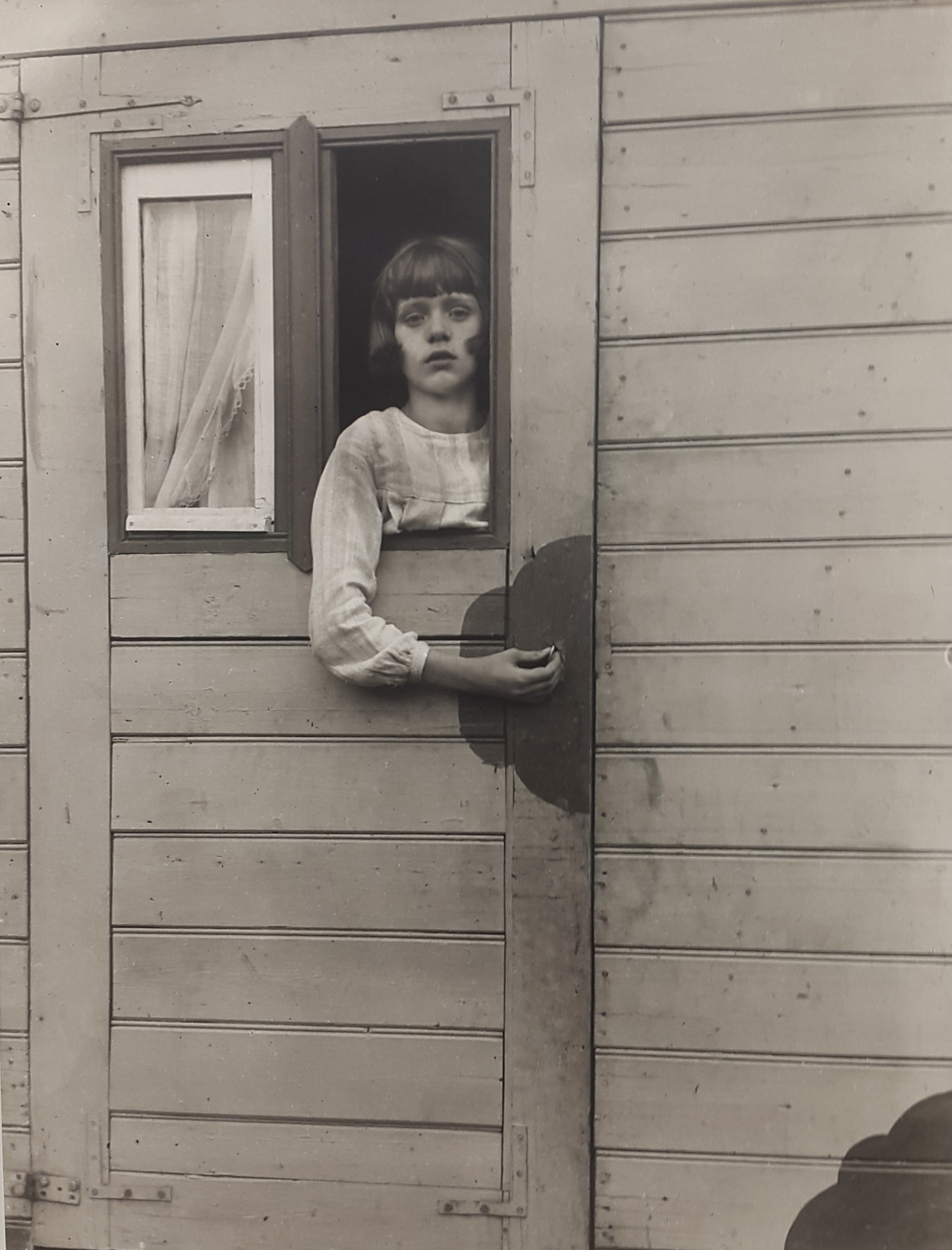 These photographs are mesmerizing, but beyond the masterful portraiture are the subjects themselves. Who are these people? Several individuals caught my eye, such as these two in a photograph titled Bohemians:
These photographs are mesmerizing, but beyond the masterful portraiture are the subjects themselves. Who are these people? Several individuals caught my eye, such as these two in a photograph titled Bohemians:
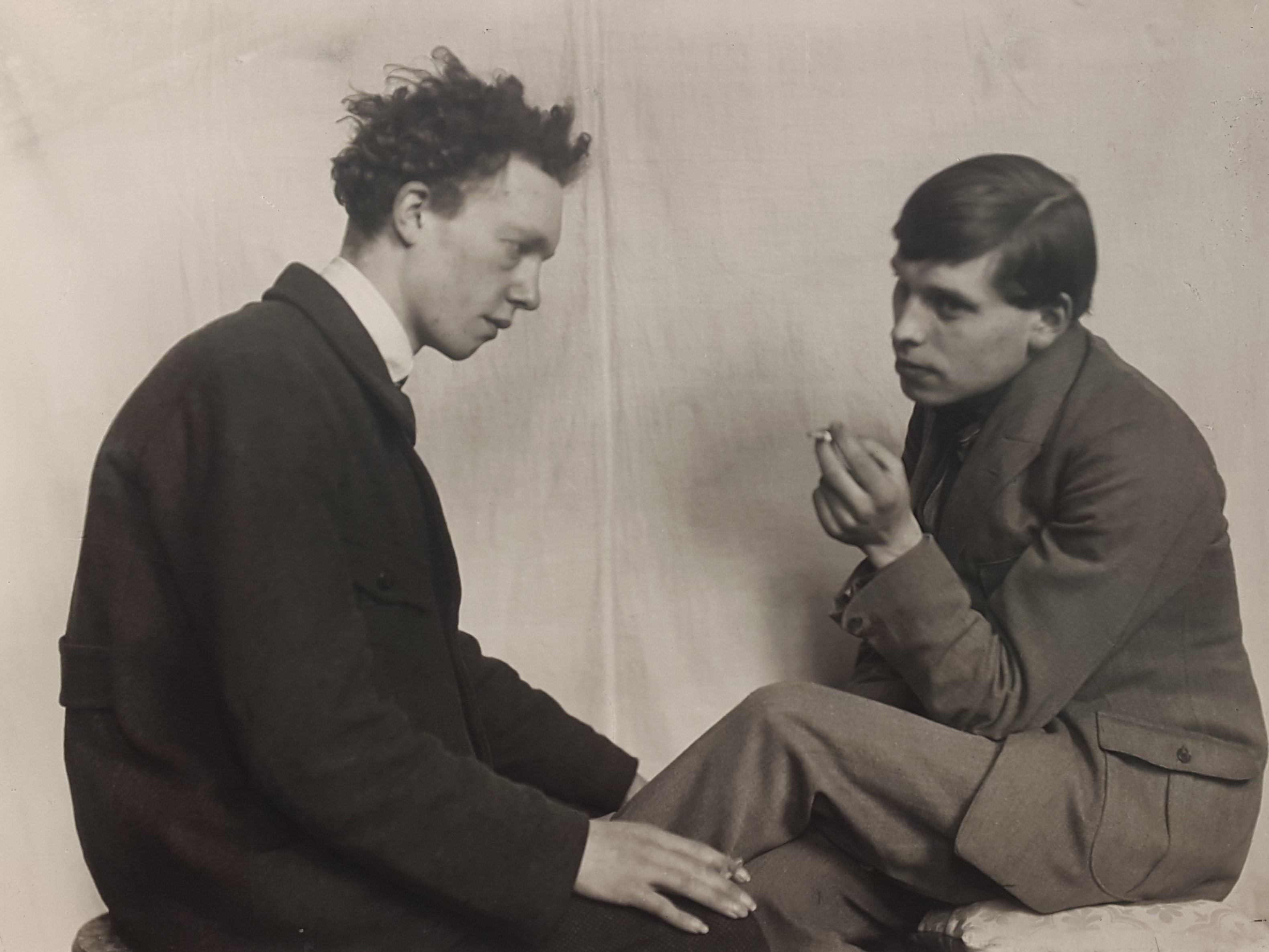 This is a portrait of Will Bongard and Gottfried Brockmann who were associated with the Cologne Dada movement and the group of artists known as the Cologne Progressives. There are also portraits of the artists Franz Wilhelm Seiwert and Heinrich Hoerle who were also part of this group:
This is a portrait of Will Bongard and Gottfried Brockmann who were associated with the Cologne Dada movement and the group of artists known as the Cologne Progressives. There are also portraits of the artists Franz Wilhelm Seiwert and Heinrich Hoerle who were also part of this group:

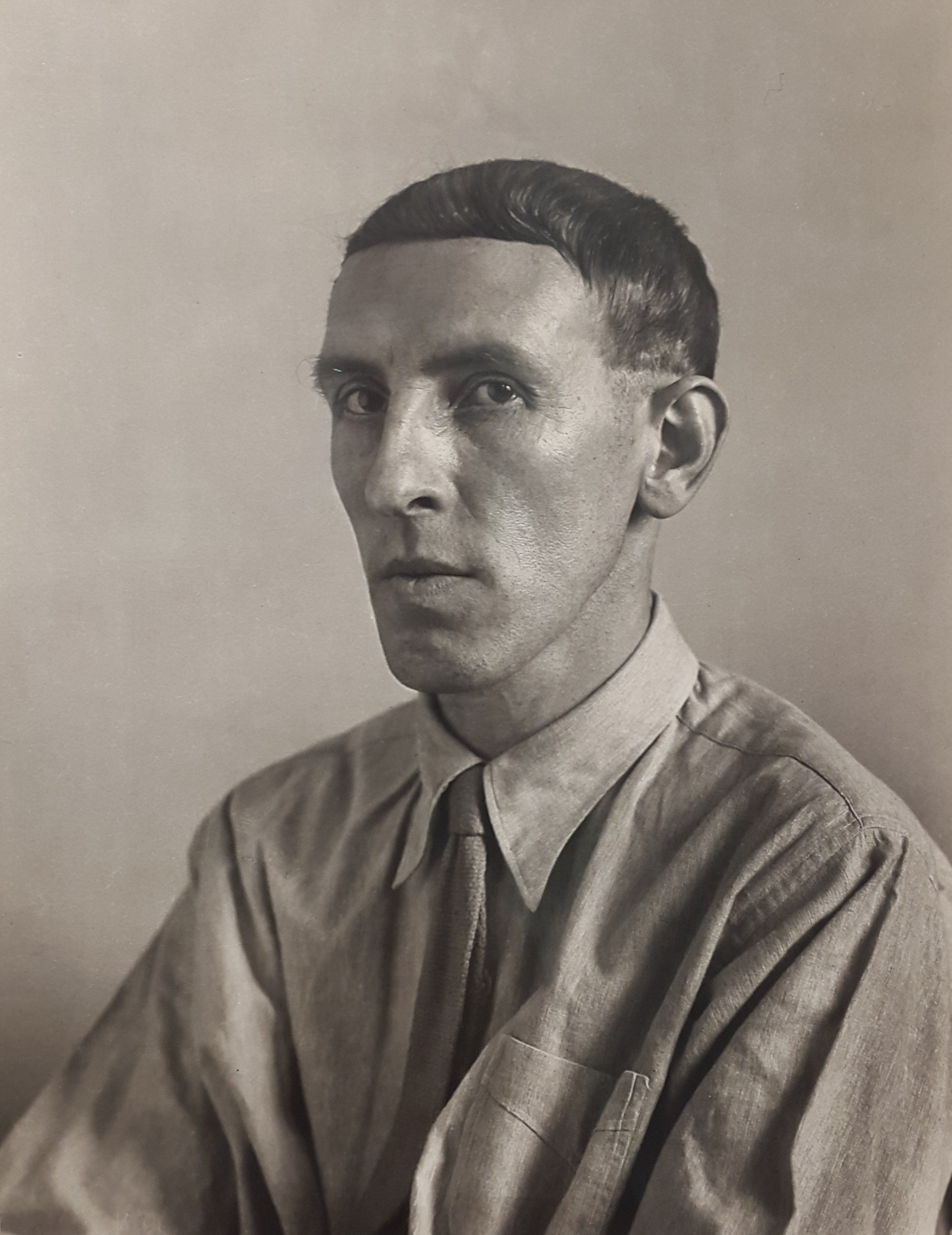 Intrigued by Sander's photographic portraits of these four charismatic-looking men, I set about tracking down some examples of their artworks such as this painting by Hoerle:
Intrigued by Sander's photographic portraits of these four charismatic-looking men, I set about tracking down some examples of their artworks such as this painting by Hoerle:


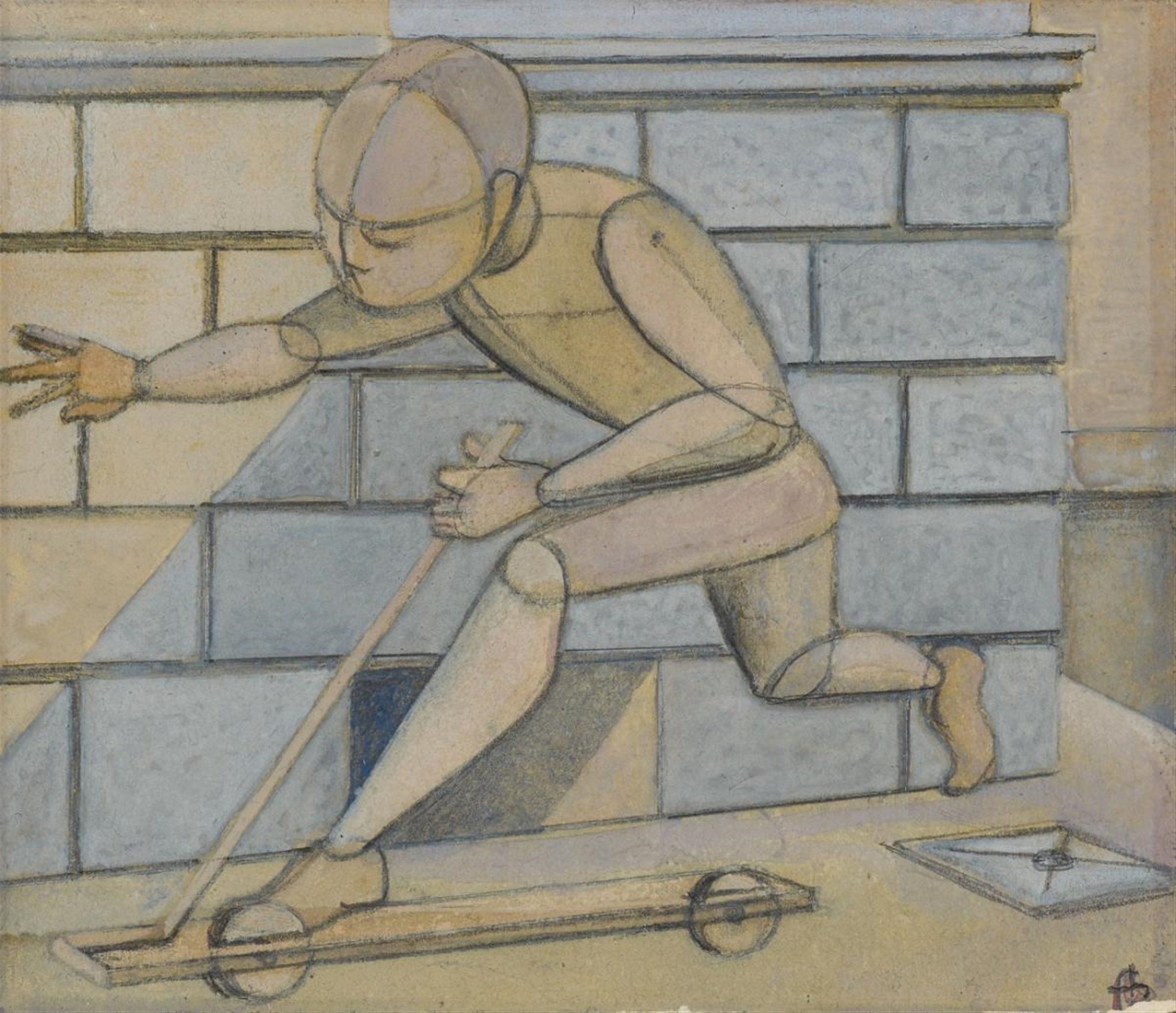
 I'd like to look more closely at these artists and their works. In the meantime, here's a selection:
I'd like to look more closely at these artists and their works. In the meantime, here's a selection:
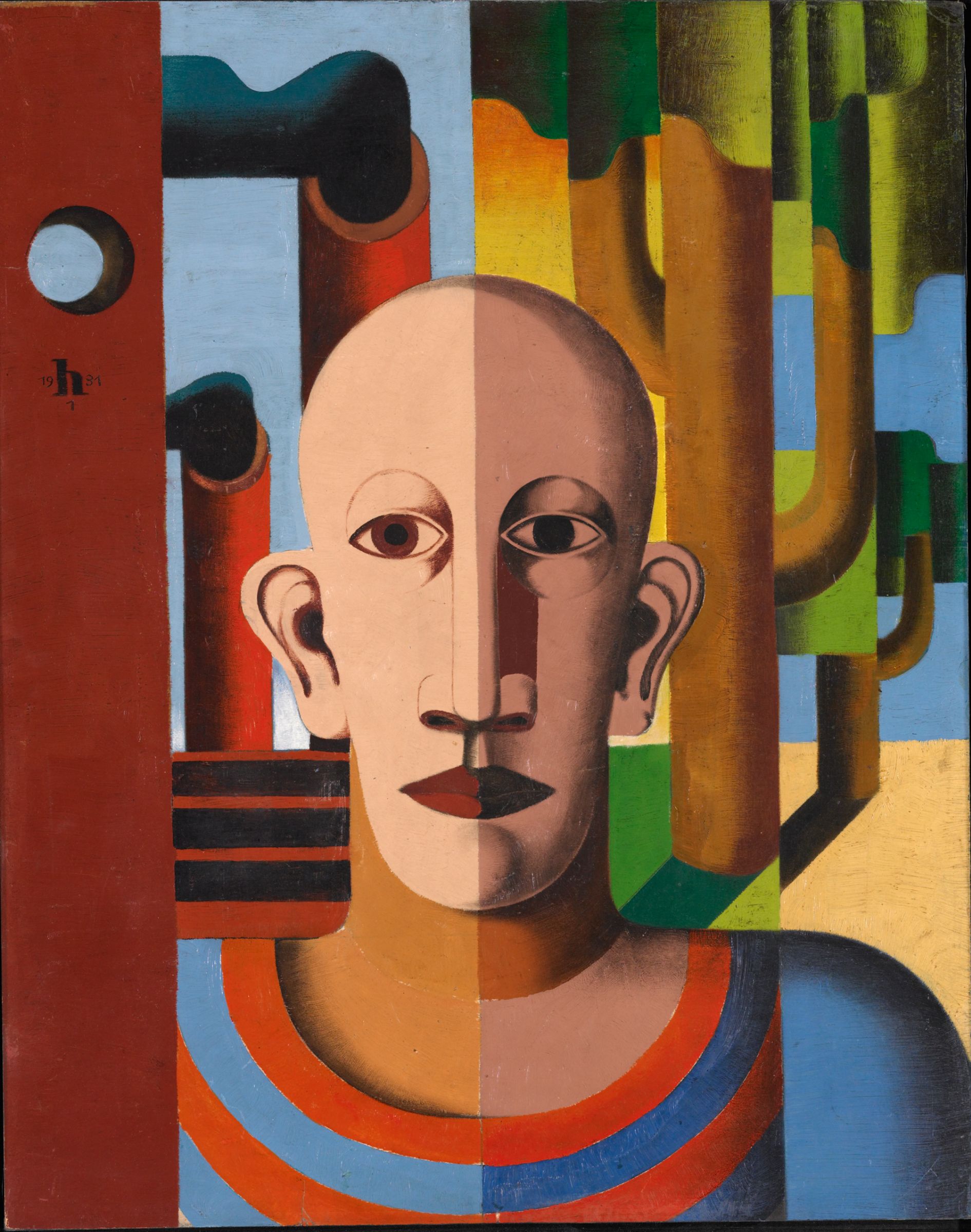

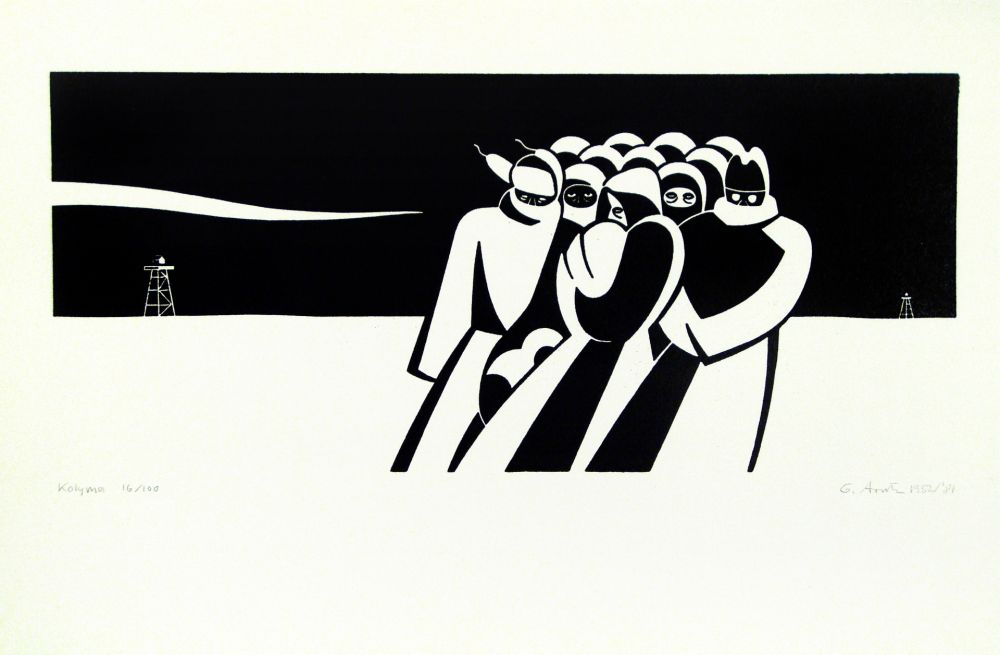
Exhibitions, Museums & Galleries Visited in 2015
- Snowdon: A Life in View, NPG
- Colour, Light, Texture: Portraits by Matthew Smith and Frank Dobson, NPG
- Henry Tonks: Studies of the Artist, NPG
- Artists and Sitters: 1960-2000, NPG
- Face to Face: British Prints from the Clifford Chance Collection, Sir John Soane’s Museum
- Hogarth’s London, Cartoon Museum
- Chris Stein/Negative: Me, Blondie, and The Advent of Punk, Somerset House
- Guy Bourdin: Image Maker, Somerset House
- Adventures of the Black Square, Whitechapel
- Bart Lodewijks: White Li(n)es, Whitechapel
- David Batchelor: Monochrome Archive, Whitechapel
- Fiona Banner selects from the V-A-C Collection: Stamp Out Photographie, Whitechapel
- Phillip King, Tate Britain
- New Brutalist Image 1949-55, Tate Britain
- Cairo to Constantinople: Early Photographs of the Middle East, Queen’s Gallery
- Gold, Queen’s Gallery
- 100 Buildings 100 Years: Views of British Architecture since 1914, RA
- Charles Stewart: Black and White Gothic, RA
- Rubens and His Legacy, RA
- Marlene Dumas: The Image as Burden, Tate Modern
- Drawn by Light: The Royal Photographic Society Collection, Science Museum
- Christian Marclay, White Cube Bermondsey
Kent-ish Town
 William Kent (1685-1748) was the leading architect and designer of early Georgian Britain. A polymath, he turned his hand to everything from painting to designing sculpture, architecture, interior decoration, furniture, metalwork, book illustration and landscape gardens. Kent's life coincided with a major turning point in British history - the accession of the new Hanoverian Royal Family in 1714. This exhibition at the V&A, London, reveals how William Kent came to play a leading role in establishing a new design aesthetic for this crucial period when Britain defined itself as a nation.
William Kent (1685-1748) was the leading architect and designer of early Georgian Britain. A polymath, he turned his hand to everything from painting to designing sculpture, architecture, interior decoration, furniture, metalwork, book illustration and landscape gardens. Kent's life coincided with a major turning point in British history - the accession of the new Hanoverian Royal Family in 1714. This exhibition at the V&A, London, reveals how William Kent came to play a leading role in establishing a new design aesthetic for this crucial period when Britain defined itself as a nation.
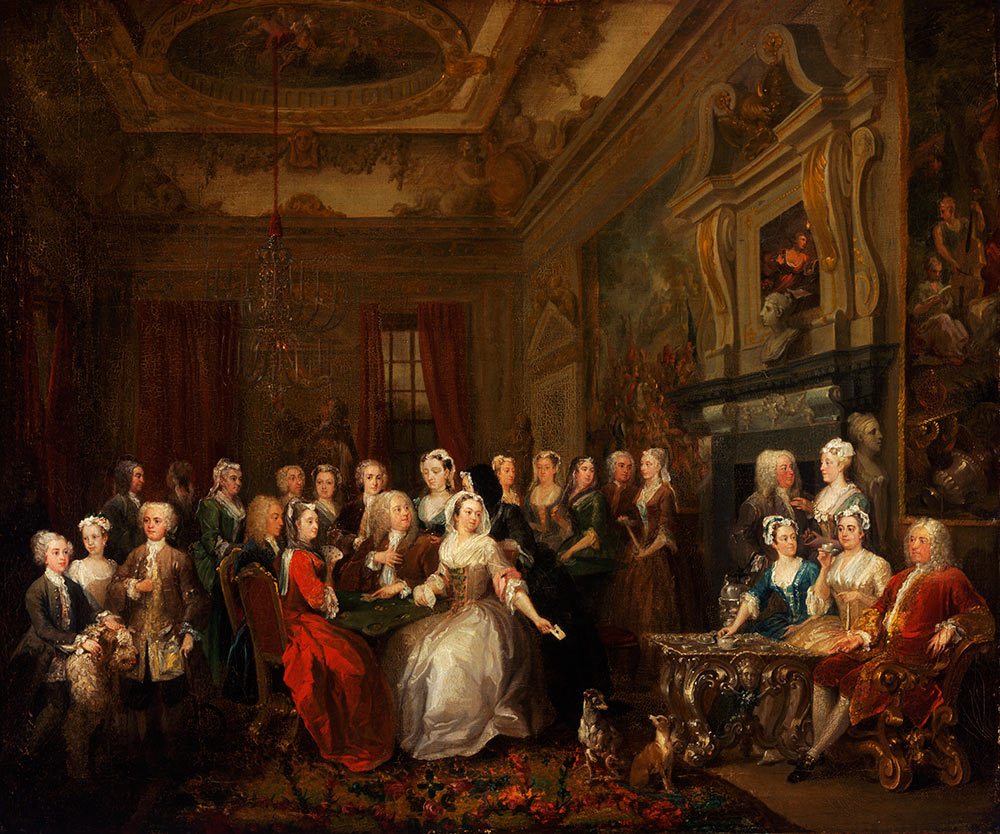
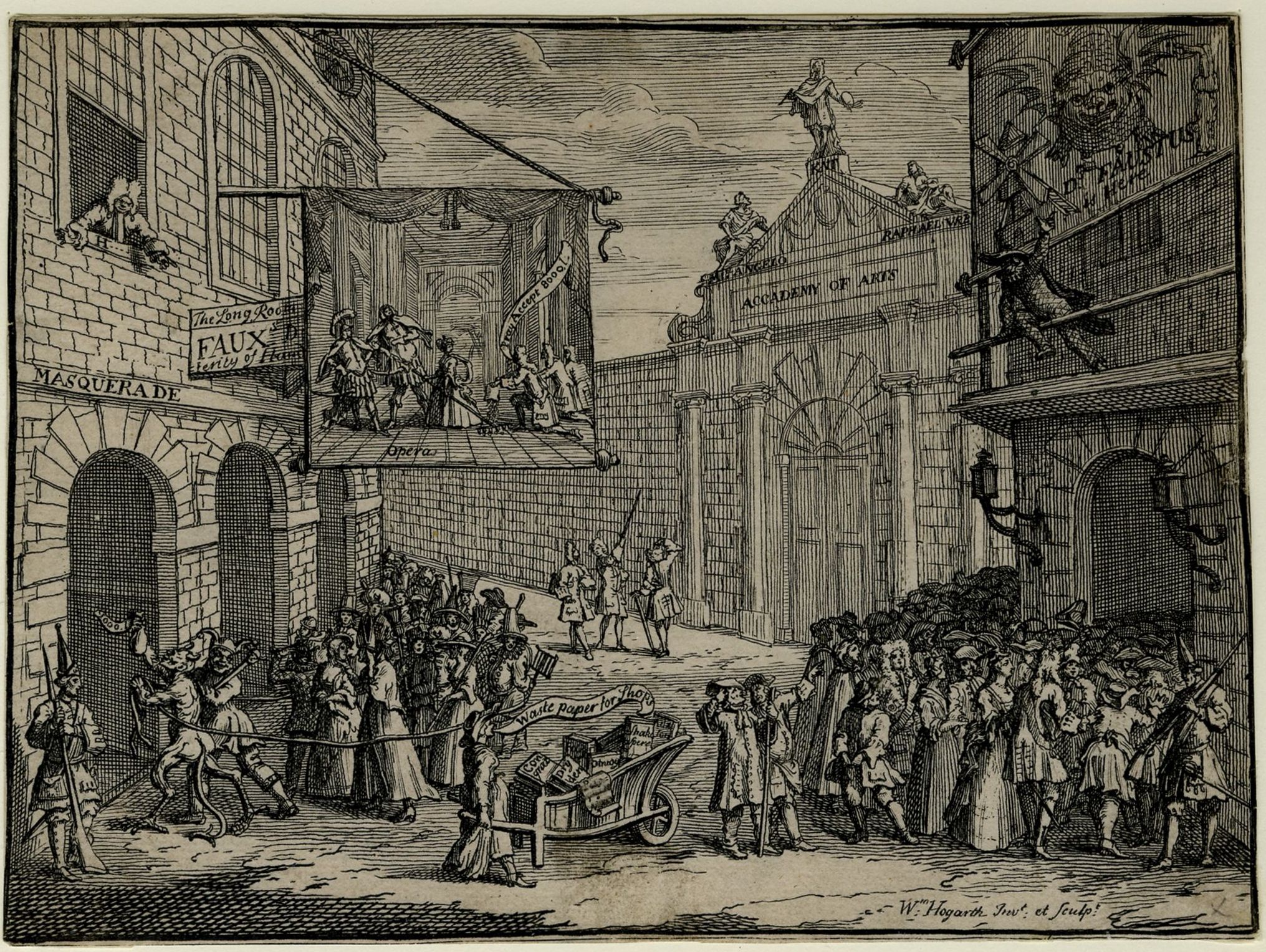
The Eastenders that time forgot
 Last year David Buckman published his extensive research on the East London Group of Artists in his fascinating book From Bow to Biennale: Artists of the East London Group. Now here's the exhibition to accompany the book - and it's a corker.
The East London Group of Artists were a very successful gang of painters which existed for over 10 years from the late 1920s. In their day they were both an innovative and popular artistic movement - but they have subsequently (and very sadly) been passed over by art history. In their heyday there were about 35 members of the group, mostly working class, realist painters who progressed to phenomenal critical acclaim by chronicling life in east London between the World Wars.
Last year David Buckman published his extensive research on the East London Group of Artists in his fascinating book From Bow to Biennale: Artists of the East London Group. Now here's the exhibition to accompany the book - and it's a corker.
The East London Group of Artists were a very successful gang of painters which existed for over 10 years from the late 1920s. In their day they were both an innovative and popular artistic movement - but they have subsequently (and very sadly) been passed over by art history. In their heyday there were about 35 members of the group, mostly working class, realist painters who progressed to phenomenal critical acclaim by chronicling life in east London between the World Wars.
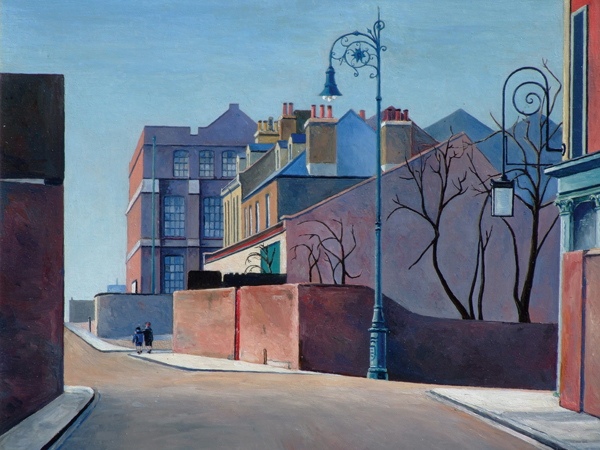

Exhibitions, Galleries & Museums Visited in 2014
- Whistler and the Thames, Dulwich Picture Gallery
- Masterpieces of Chinese Painting, V&A
- Pearls, V&A
- Turner and the Sea, National Maritime Museum
- Yinka Shonibare MBE at Greenwich, National Maritime Museum
- Painting Now: Five contemporary artists, Tate Britain
- Art Under Attack, Tate Britain
- Only in England: Photographs by Tony Ray-Jones and Martin Parr, Science Museum
- Daumier: 1808-1879 Visions of Paris, Royal Academy
- Picasso Linocuts, British Museum
- Paul Klee: Making Visible, Tate Modern
- Mira Schendel, Tate Modern
- Derek Boshier: Imaginary Portraits, National Portrait Gallery
- Starring Vivien Leigh: A Centenary Celebration, National Portrait Gallery
- Bill Woodrow, Royal Academy
- Alan Sorrell, Sir John Soane’s Museum
- Stanley Spencer: Heaven in a Hell of War, Somerset House
- Behind the Mask: Andy Gotts Portraits for BAFTA, Somerset House
- Taylor Wessing Photographic Portrait Prize 2013, National Portrait Gallery
- Janey Morris: Pre-Raphaelite Muse, National Portrait Gallery
- Michael Peto Photographs: Mandela to McCartney, National Portrait Gallery
- Club to Catwalk: London Fashion in the 1980s, V&A
- Pop Art Design, Barbican
- Jake and Dinos Chapman: Come and See, Serpentine Gallery
- Wael Shawky, Serpentine Gallery
- Fischli/Weiss: Rock on Top of Another Rock, Serpentine Gallery
- John Carter RA: Between Dimensions, Royal Academy
- Transformer: Aspects of Travesty, Richard Saltoun
- Bailey’s Stardust, National Portrait Gallery
- Isaac Julien: Playtime, Victoria Miro (Mayfair)
- Hans Arp: Chance – Form – Language (and a FRANZWESTigation), Hauser & Wirth, North Gallery
- Synthesis, Trinity Buoy Wharf
- Martin Creed: What’s the Point of It?, Hayward Gallery
- Sun Xun: Yesterday Is Sorrow, Hayward Gallery
- James Turrell: Recent Works, Pace London
- Wildlife Photographer of the Year 2013, Natural History Museum
- Churchill War Rooms, Imperial War Museum
- Astronomy Photographer of the Year 2013, Royal Observatory
- Richard Deacon, Tate Britain
- Hannah Höch, Whitechapel Gallery
- Kader Attia: Continuum of Repair: The Light of Jacob’s Ladder, Whitechapel Gallery
- Elizabeth Price: AT THE HOUSE OF MR X, Whitechapel Gallery
- Contemporary Art Society: Damn braces: Bless relaxes, Whitechapel Gallery
- Georgians Revealed: Life, Style and the Making of Modern Britain, British Library
- Georg Baselitz: Farewell Bill, Gagosian Gallery, Britannia Street
- Landscapes of Space: Paintings and Prints by Tess Jaray, Djanogly Art Gallery, Nottingham Lakeside
- Behold the Man: Fay Mummery, Wallner Gallery, Nottingham Lakeside
- Chekhoviana: Marketing a Foreign Classic to British Audiences, Weston Gallery, Nottingham Lakeside
- The Aura of Boxing: The Black and White Series, Max Kandhola, New Art Exchange, Nottingham
- The Manipulated Image, New Art Exchange, Nottingham
- Jeremy Deller: All That Is Solid Melts Into Air, Nottingham Castle
- Premiums: Interim Projects, Royal Academy
- Sensing Spaces: Architecture Reimagined, Royal Academy
- Renaissance Impressions: Chiaroscuro Woodcuts from the Collections of Georg Baselitz and the Albertina, Vienna, Royal Academy
- Andy Warhol, David Lynch, William S. Burroughs, The Photographers’ Gallery
- George Condo: Headspace, Simon Lee
- La Fine di Dio: Maurizio Cattelan, Lucio Fontana, Gagosian – Davies St
- George Condo: Ink Drawings, Skarstedt Gallery
- Ruin Lust, Tate Britain
- Richard Hamilton, Tate Modern
- Germany Divided: Baselitz and His Generation, British Museum
- Darren Almond: To Leave a Light Impression, White Cube, Bermondsey
- He Xiangyu: Inside the White Cube, White Cube, Bermondsey
- Franz Ackerman: 9x9x9, White Cube, Bermondsey
- Eleanor Moreton: Tales of Love and Darkness, Ceri Hand
- Ellen Gallagher: New Work, Hauser & Wirth, North Gallery
- Tales of Paradise: Gauguin, Ordovas
- Peter Doig: Early Works, Michael Werner Gallery
- Alex Katz: 70s / 80s / 90s, Timothy Taylor Gallery
- Dieter Roth, Arnulf Rainer: Collaborations, Hauser & Wirth, South Gallery
- Daphne Wright: A Small Thing To Ask, Frith Street Gallery
- Rosson Crow, Francesca Dimattio, Mickalene Thomas: Domestic Unrest, Pippy Houldsworth Gallery
- Michael Craig-Martin: Objects Of Our Time, Alan Cristea Gallery
- Master Prints: Curated by Michael Craig-Martin, Alan Cristea Gallery
- Marius Bercea: Hypernova, Blain Southern
- The Humans, Sprüth Magers
- The Great War in Portraits, National Portrait Gallery
- Frozen Thames: Frost Fair 1814, Museum of London - Docklands
- Veronese: Magnificence in Renaissance Venice, National Gallery
- Henri Matisse: The Cut-Outs, Tate Modern
- A Dialogue with Nature: Romantic Landscapes from Britain and Germany, Courtauld
- Court and Craft: A Masterpiece from Northern Iraq, Courtauld
- Boro: Threads of Life, Somerset House
- Burnt Generation, Somerset House
- Giorgio de Chirico: Myth and Mystery, Estorick Collection
- Mondrian and Cubism: Paris 1912-14, Gemeentemuseum den Haag
- Highlights Mauritshuis, Gemeentemuseum den Haag
- Panorama Mesdag, The Hague
- Patrick Hughes: Moving Space, Panorama Mesdag
- Escher in het Paleis, The Hague
- Vermeer Centrum, Delft
- Nieuwe Kerk, Delft
- Rijksmuseum, Amsterdam
- The East London Group of Artists: From Bow to Biennale, The Nunnery
- William Kent: Designing Georgian Britain, V&A
- Under the Influence: John Deakin and the Lure of Soho, The Photographers’ Gallery
- Deutsche Börse Prize 2014, The Photographers’ Gallery
- Tate Britain Commission 2014: Phyllida Barlow - Dock, Tate Britain
- Kenneth Clark: Looking for Civilisation, Tate Britain
- The Glamour of Italian Fashion: 1945-2014, V&A
- M. F. Husain: Master of Modern Indian Painting, V&A
- Summer Exhibition, Royal Academy
- 4 Painters 10 Works, Josh Lilley
- The False Memory Archive, Carroll/Fletcher
- The False Memory Archive, Freud Museum
- Elizabeth Neel: The People, The Park, The Ornament, Pilar Corrias
- British Folk Art, Tate Britain
- Lynn Chadwick: Retrospectives, Blain Southern
- David Hockney: The Arrival of Spring, Annely Juda
- Ian Davenport: Colourfall, Waddington Custot
- Kazimir Malevich, Tate Modern
- Mauritshuis, The Hague
- Mauritshuis – The Building, Mauritshuis, The Hague
- Marina Abramović: 512 Hours, Serpentine Gallery
- Ed Atkins, Serpentine Sackler Gallery
- Masterpieces from the Great Gallery, Wallace Collection
- The Wallace Collection, Wallace Collection
- Winding of the Clocks, Wallace Collection
- Tove Jansson: Tales from the Nordic Archipelago, ICA
- Journal, ICA
- Making Colour, National Gallery
- BP Portrait Award, NPG
- Portraying the Past, Society of Antiquaries of London
- Dennis Hopper: The Lost Album, RA
- Artistic Exchanges: Corot, Costa, Leighton, National Gallery
- Virginia Woolf: Art, Life and Vision, NPG
- Forgotten Faces, Tate Britain
- Bodies of Nature, Tate Britain
- Chris Killip, Tate Britain
- Silent Exchange: the Landscape Photography of Charlie Waite, National Theatre
- The Human Factor, Hayward
- Richard Wilson, National Museum of Wales
- Jacques Limousin: River Works, The Crystal
- Progress, Foundling Museum
- Frank Auerbach: Paintings and Drawings from the Lucien Freud Estate, Tate Britain
- Late Turner: Painting Set Free, Tate Britain
- Radical Geometry: Modern Art of South America, RA
- The Real Tudors: Kings and Queens Rediscovered, NPG
- The World of Rupert Potter: Photographs of Beatrix, Millais and Friends - NPG
- Rachel Kneebone: 399 Days – White Cube Bermondsey
- Gilbert & George: Scapegoating Pictures for London, White Cube, Bermondsey
- The Foreign & Commonwealth Office, King Charles St
- Royal Society of Chemistry, Burlington House
- Peggy Angus: Designer, Teacher, Painter, Towner, Eastbourne
- Land and Sea, Towner
- Ravilious Room, Towner
- East Sussex Open 2014, Towner
- Constable: The Making of a Master, V&A
- Ships, Clocks & Stars: The Quest for Longitude, NMM
- The Wolsey Angels, V&A
- John Fontcuberta: Stranger than Fiction, Science Museum
- Make Life Worth Living: Nick Hedges’ Photographs for Shelter 1968-72, Science Museum
- The First Georgians: Art and Monarchy 1714-1760, Queen’s Gallery
- Frieze Art Fair, Regent’s Park
- Louis Kahn: The Power of Architecture, Design Museum
- Alibis: Sigmar Polke, Tate Modern
- Anselm Kiefer, RA
- Anarchy and Beauty: William Morris and his Legacy, NPG
- Grayson Perry: Who Are You?, NPG
- Designing the 20th Century: Life and Works of Abram Games, Jewish Museum
- Jeremy Deller: English Magic, Turner Contemporary
- Krijn de Koning: Dwelling, Turner Contemporary
- Edmund de Waal: Atmosphere, Turner Contemporary
- Rembrandt: Late Works, National Gallery
- Constructing Worlds: Photography and Architecture in the Modern Age, Barbican
- Walead Beshty, Barbican
- Chiswick House
- Turner Prize 2014, Tate Britain
- Poor Man’s Picture Gallery: Victorian Art and Stereoscopic Photography, Tate Britain
- William Hazlitt: Through the Eyes of a Critic, Tate Britain
- William Hogarth 1697-1754, Tate Britain
- Truth and Memory: British Artists of the First World War, IWM
- A Victorian Obsession: The Pérez Simón Collection, Leighton House
- Jasper Johns: Regrets, Courtauld
- Egon Schiele: The Radical Nude, Courtauld
- The Book of Kells, Trinity College Library, Dublin
- Dublin’s City Hall: The Story of the Capital, Dublin
- Duncan Campbell, Irish Museum of Modern Art
- Primal Architecture, Irish Museum of Modern Art
- Yeats: The Life and Works of William Butler Yeats, National Library of Ireland
- Lines of Vision: Irish Writers at the National Gallery, National Gallery of Ireland
- Hennessy Portrait Prize ’14, National Gallery of Ireland
- Jean Bardon: Recent Works & Louise Leonard: Town and Country, Graphic Studio Gallery, Dublin
- Efforts and Ideals: Prints of the First World War, Dublin City Gallery The Hugh Lane
- Phoenix Rising: Art and the Civic Imagination, Dublin City Gallery The Hugh Lane
- Francis Bacon Studio, Dublin City Gallery The Hugh Lane
- Richard Tuttle: I Don't Know, Or The Weave of Textile Language, TM
- Giovanni Battista Moroni, RA
- Allen Jones RA, RA
- Terror and Wonder: The Gothic Imagination, British Library
- Post Pop: East Meets West, Saatchi Gallery
- Hiroshi Sugimoto: Still Life, Pace London
- Horst: Photographer of Style, V&A
- Disobedient Objects, V&A
- Conflict Time Photography, TM
- Taylor Wessing Photographic Portrait Prize, NPG
- Maggie Hambling: Walls of Water, NG
- Peder Balke, NG
- Twixt Two Worlds, Towner
- Frames of Mind, Towner
- Mirrorcity: London Artists on Fiction and Reality, Hayward
Getting up close to Mondrian
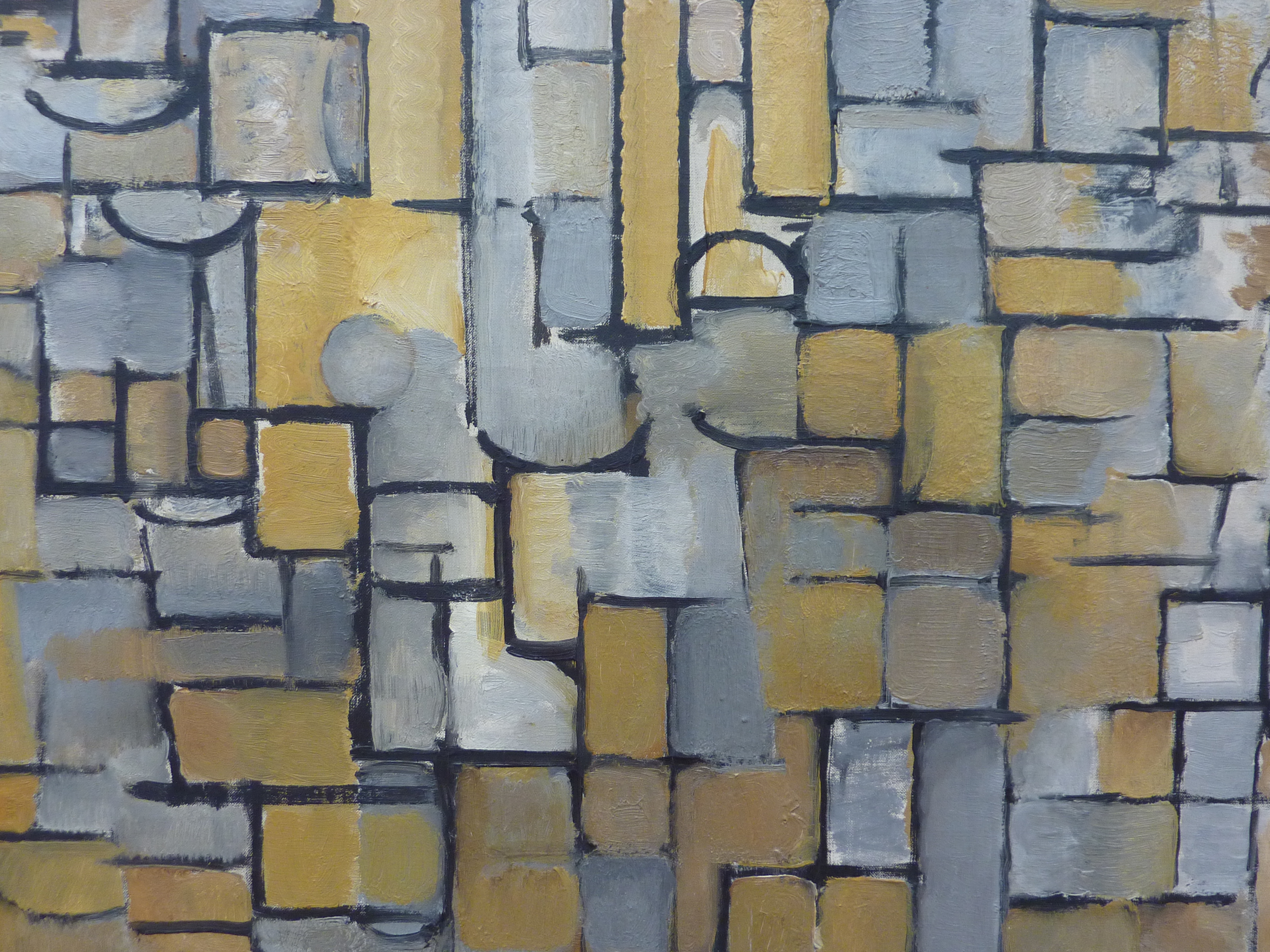 This is from the exhibition Mondrian and Cubism: Paris 1912-1914 at the Gemeente Museum den Haag. You can hear me talking about Mondrian and discussing the exhibition on Episode 11 of the Serendipitous Compendium.
This is from the exhibition Mondrian and Cubism: Paris 1912-1914 at the Gemeente Museum den Haag. You can hear me talking about Mondrian and discussing the exhibition on Episode 11 of the Serendipitous Compendium.
